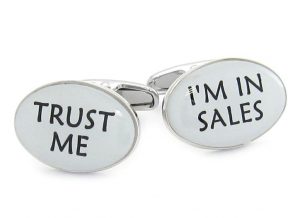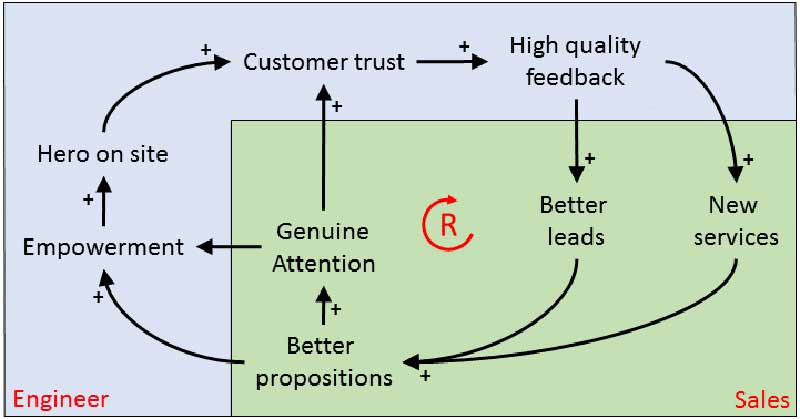Have you ever had to Credit or Discount an invoice? If the answer is ‘yes’ then you have leakage, if the answer is ‘no’ then you definitely have leakage.
How do you respond to the Aberdeen finding that best-in-class companies have a whopping 14% warranty & contract leakage? Denial, absurd, overstated, or … wait-a-minute, maybe I’m not looking at the right KPIs to detect leakage. Once you acknowledge leakage exists in your organisation, wouldn’t you go all the way to manage leakage out of your business, knowing it has a direct impact on your bottom line?
Defining leakage
What is service leakage? In the simplest terminology: you are losing money. And the bad news is that it often happens without you knowing or realising it.
We can distinguish two types of service leakage:
- Non-Contract leakage : the periods in the operational life cycle of an asset not covered by warranty and/or a service contract (sometimes this is also called T&M-leakage because service outside a contract classifies as T&M).
- Contract leakage: an asset is covered by warranty and/ or a service contract but in your service delivery you provide more and/or a higher level of service than the customer is entitled to.
Contract leakage typically occurs when service organisations do not know and/or manage expiration dates of warranty and contracts. Non-contract leakage typically occurs when the entitlement process is fragmented and/ or when the information is not accessible to all involved service actors.
Let’s mention a couple of common scenarios:
- A customer claims a defect within the warranty period. You correctly entitle the job as ‘warranty’. On site the technician detects ‘customer induced damage’. The technician performs the repair anyhow and there is no charge to the customer.
- A customer is entitled to next day service but presses you to fix the machine today without paying an additional fee. Because your technicians are not busy today, you give in to the request.
- A customer makes a service request assuming the current contract is still active. Upon entitlement check you detect it has expired three months ago. The customer agrees to renew the contract per current date. You incur 3 months loss in contract revenue.
- A customer has multiple machines of the same model. Only one of them is covered by a contract. The single contract line is used to entitle work on all of them because the customer always uses the same serial number.
Service Leaks are not the problem; they are the symptom. They reveal a disconnect between process design and actual behaviour. Denial of leakage increases the disconnect.
Impact of leakage
One of the unfortunate things in business is that the cost always hits you – now, if you are so good at capturing cost why do you allow revenue to slip through your fingers? How do you think your shareholders would enjoy hearing that you worked on a customer’s asset and neglected to bill them?
Another way to look at the impact of leakage is to establish how much extra revenue would need to found above and beyond what you are already billing for. Let me paint a picture for you, as we have established you capture all of your costs so any leakage (missed revenue) that you capture will have a 100% positive impact to your bottom line – every dollar billed will be a full dollar of equivalent gross margin. So, let’s say you were running at 20% margin as a service organisation and you allowed $100,000 to leak through your service organisation, now a service org would need to go and find $500,000 of brand spanking new business to offset this $100,000 leakage just to break even. How hard is it for a business to find $500,000 of extra revenue with the same resources?
Actually, quite easy – set your system up to minimise the risk of leakage….
On top of the cost, revenue and margin contribution impacts, customer expectation is a big one. Leakage has a very large behavioural component. If a customer is used to getting service for free, it becomes very difficult to start charging for it. If a customer ‘discovers’ you can’t manage your entitlements correctly, this may lead to ‘unwanted’ service calls.
A similar behavioural impact can be expected on the technician’s end. A technician chose his job because he/she wants to fix things and be a hero on site. A technician did not select the job to do admin and become a contract-referee. Thus, if you do not empower your technicians with the right tools and information, do not expect any cost/revenue sensitivity, they will go for CSAT and please the customer.

Finding leakage
Do you find leakage or is it a matter of ‘capturing’ it? You are delivering all of the services that create the opportunity for leakage, so you already know where it is, you just need the correct tools to capture it, Oh and by the way, they are never humans and excel… You need a robust process and a software solution to support that process and remove ‘chance’ from the equation.
Detecting, quantifying and finding the origin of leakage in your organisation is a process like remedying a leaky roof. You’ll need adjacent ‘instruments’ to find the source.
Remedying leakage
The first step towards remedying leakage is accepting its existence. Once you have made leakage visible, you can start actioning it. And in general those actions fall into three categories:
- Stop delivering free service; this has a direct cost reduction benefit.
- Continue delivering ‘free’ service and start charging for it; this will increase both your revenue and your margin; the additional margin is 100% as we have shown you have already incurred the cost.
- Continue delivering ‘free’ service and use it as collateral for something else of value; this benefit is harder to manage, but we can argue it is good for CSAT and can be used during contract renewal to counter cost & rate reduction arguments from your customer.
This article is published in ServiceMax Field Service Digital on November 10th, 2020




